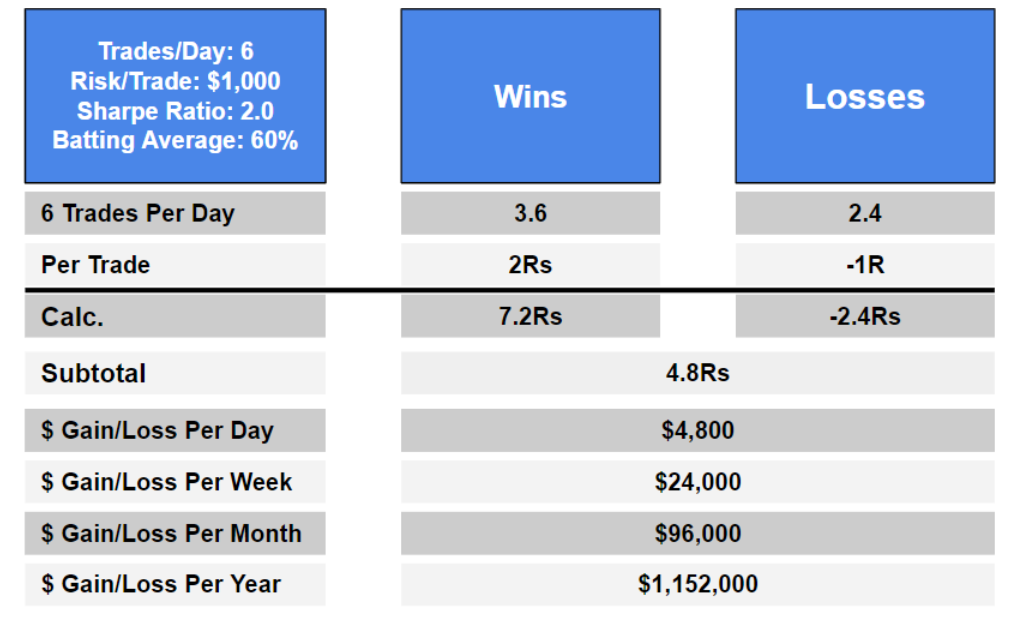
Asset allocation is the process by which you diversify your investments among different assets. This is a personal decision that depends on your time frame. The amount of time you want to invest and achieve your goals will determine how much risk you are comfortable taking. You might feel more comfortable taking on risk if you expect to retire within a few years. If your time horizon is less than that, you might want to take less risk. No matter your personal situation or financial goals, there are many options to maximize your investment portfolio.
Diversification
While individual investments may be profitable in the short term, you may be better off spreading your money across multiple types of investments, like stocks and bonds. Asset allocation will allow you to attain the best level of risk for you financial goals, while still achieving a reasonable rate return. You might want to invest in bonds if your short term financial goals are to accumulate large amounts cash. You may need to have more liquidity if you are looking for long-term financial goals. Stocks can be too volatile.

Risk tolerance
Your risk tolerance and investment goals are key factors in an asset allocation strategy. Your ability to bear large market declines. This differs from your potential loss tolerance, which is a limit on the amount of money you can afford. A portfolio made up of 100% stocks might be acceptable to you. However, 100% cash is extremely volatile and may not suit you. You need to be open to taking risks in order for your financial goals to succeed.
Time horizon
Your asset allocation will be determined by your time horizon. The time frame you set will determine what type of investment you should make and how long you will hold it. Investors often invest with a short-term goal, but this is not the best way to plan for the long-term. It's better if you focus on long-term objectives like retirement. This will allow you to take more risks with your investments.
Goals
Your goals can have a significant impact on your asset allocation strategies. Your financial goals might include building a large retirement fund, buying property, purchasing a car or yacht or paying for a child’s college education. Your time horizon or risk tolerance may also affect your goals. A conservative portfolio with lower risks would be your best choice if you want to save capital.

Categories of investment
There are three major asset categories that have different return and risk characteristics. Cash is the least risky asset and has the lowest return rate. Cash inflation is a significant risk factor that should be avoided. Here are some examples of cash. SEC warns against investing in cash. But cash is an important asset to have in your portfolio, and it is a great choice for conservative investors.
FAQ
What is a mutual-fund?
Mutual funds are pools or money that is invested in securities. They allow diversification to ensure that all types are represented in the pool. This reduces risk.
Managers who oversee mutual funds' investment decisions are professionals. Some funds let investors manage their portfolios.
Mutual funds are more popular than individual stocks, as they are simpler to understand and have lower risk.
What is a Stock Exchange exactly?
Companies can sell shares on a stock exchange. Investors can buy shares of the company through this stock exchange. The market sets the price of the share. The market usually determines the price of the share based on what people will pay for it.
The stock exchange also helps companies raise money from investors. To help companies grow, investors invest money. They buy shares in the company. Companies use their money for expansion and funding of their projects.
A stock exchange can have many different types of shares. Some are known simply as ordinary shares. These are the most common type of shares. These are the most common type of shares. They can be purchased and sold on an open market. Shares are traded at prices determined by supply and demand.
Preferred shares and bonds are two types of shares. When dividends become due, preferred shares will be given preference over other shares. Debt securities are bonds issued by the company which must be repaid.
Can you trade on the stock-market?
Everyone. All people are not equal in this universe. Some have better skills and knowledge than others. So they should be rewarded for their efforts.
Trading stocks is not easy. There are many other factors that influence whether you succeed or fail. If you don’t have the ability to read financial reports, it will be difficult to make decisions.
Learn how to read these reports. Understanding the significance of each number is essential. You must also be able to correctly interpret the numbers.
Doing this will help you spot patterns and trends in the data. This will enable you to make informed decisions about when to purchase and sell shares.
If you are lucky enough, you may even be able to make a lot of money doing this.
How does the stock market work?
When you buy a share of stock, you are buying ownership rights to part of the company. Shareholders have certain rights in the company. He/she can vote on major policies and resolutions. He/she can seek compensation for the damages caused by company. He/she also has the right to sue the company for breaching a contract.
A company cannot issue any more shares than its total assets, minus liabilities. This is called capital adequacy.
A company with a high capital sufficiency ratio is considered to be safe. Companies with low ratios are risky investments.
How do you choose the right investment company for me?
It is important to find one that charges low fees, provides high-quality administration, and offers a diverse portfolio. The type of security in your account will determine the fees. While some companies do not charge any fees for cash holding, others charge a flat fee per annum regardless of how much you deposit. Others charge a percentage of your total assets.
It is also important to find out their performance history. Companies with poor performance records might not be right for you. Avoid low net asset value and volatile NAV companies.
It is also important to examine their investment philosophy. In order to get higher returns, an investment company must be willing to take more risks. If they're unwilling to take these risks, they might not be capable of meeting your expectations.
What is security on the stock market?
Security can be described as an asset that generates income. Most security comes in the form of shares in companies.
A company may issue different types of securities such as bonds, preferred stocks, and common stocks.
The earnings per shares (EPS) or dividends paid by a company affect the value of a stock.
Shares are a way to own a portion of the business and claim future profits. You receive money from the company if the dividend is paid.
You can sell your shares at any time.
How are share prices set?
Investors decide the share price. They are looking to return their investment. They want to make profits from the company. So they purchase shares at a set price. If the share price goes up, then the investor makes more profit. If the share price falls, then the investor loses money.
An investor's main objective is to make as many dollars as possible. This is why they invest into companies. This allows them to make a lot of money.
How can I invest in stock market?
Through brokers, you can purchase or sell securities. Brokers can buy or sell securities on your behalf. When you trade securities, brokerage commissions are paid.
Brokers often charge higher fees than banks. Banks are often able to offer better rates as they don't make a profit selling securities.
If you want to invest in stocks, you must open an account with a bank or broker.
A broker will inform you of the cost to purchase or sell securities. This fee is based upon the size of each transaction.
Your broker should be able to answer these questions:
-
Minimum amount required to open a trading account
-
What additional fees might apply if your position is closed before expiration?
-
what happens if you lose more than $5,000 in one day
-
How long can positions be held without tax?
-
How you can borrow against a portfolio
-
Whether you are able to transfer funds between accounts
-
How long it takes to settle transactions
-
The best way buy or sell securities
-
How to Avoid Fraud
-
How to get help for those who need it
-
Can you stop trading at any point?
-
Whether you are required to report trades the government
-
If you have to file reports with SEC
-
Whether you need to keep records of transactions
-
Whether you are required by the SEC to register
-
What is registration?
-
What does it mean for me?
-
Who needs to be registered?
-
When do I need to register?
Statistics
- Even if you find talent for trading stocks, allocating more than 10% of your portfolio to an individual stock can expose your savings to too much volatility. (nerdwallet.com)
- Our focus on Main Street investors reflects the fact that American households own $38 trillion worth of equities, more than 59 percent of the U.S. equity market either directly or indirectly through mutual funds, retirement accounts, and other investments. (sec.gov)
- Ratchet down that 10% if you don't yet have a healthy emergency fund and 10% to 15% of your income funneled into a retirement savings account. (nerdwallet.com)
- "If all of your money's in one stock, you could potentially lose 50% of it overnight," Moore says. (nerdwallet.com)
External Links
How To
How to create a trading strategy
A trading plan helps you manage your money effectively. This allows you to see how much money you have and what your goals might be.
Before you begin a trading account, you need to think about your goals. You may want to save money or earn interest. Or, you might just wish to spend less. You might want to invest your money in shares and bonds if it's saving you money. If you are earning interest, you might put some in a savings or buy a property. Maybe you'd rather spend less and go on holiday, or buy something nice.
Once you know your financial goals, you will need to figure out how much you can afford to start. This depends on where you live and whether you have any debts or loans. Also, consider how much money you make each month (or week). Income is the sum of all your earnings after taxes.
Next, save enough money for your expenses. These include bills, rent, food, travel costs, and anything else you need to pay. Your monthly spending includes all these items.
You'll also need to determine how much you still have at the end the month. This is your net income.
This information will help you make smarter decisions about how you spend your money.
Download one online to get started. You could also ask someone who is familiar with investing to guide you in building one.
Here's an example: This simple spreadsheet can be opened in Microsoft Excel.
This shows all your income and spending so far. You will notice that this includes your current balance in the bank and your investment portfolio.
Here's an additional example. This was created by a financial advisor.
This calculator will show you how to determine the risk you are willing to take.
Don't try and predict the future. Instead, think about how you can make your money work for you today.